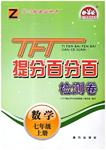题目内容
阅读下面短文,从短文后各题所给的A、B、C和D四个选项中,选出可以填入空白处的最佳选项,并在答题卡上将该项涂黑。
This spring, he has become the new poster boy. Thanks to the _________ popular South Korean TV series _________ Descendants of the Sun, the _________ of its male lead, known as “Song Joong-ki Syndrome (综合症)”, has swept _________ Asia.
Song, 31, _________ the handsome Captain, the leader of a peacekeeping unit because of military _________ . The captain has to make life-or-death decisions, _________ he is falling in love with a doctor.
It is the actor’s first role after his two-year mandatory (义务的)military _________. “It did prepare me for the role _________ an army officer,” Song said. Despite his _________ success in the character, some who know him for long have doubted _________ he is macho (有男子气概的) enough or not. But Song has already proven everything. Insisting on shooting his own stunts (特技), the actor broke his right wrist and got a _________ knee injury that took at least eight weeks to _________ from. Surprisingly, Song went back and started _________ non-fighting scenes soon.
He was shy and didn’t feel at ease in front of cameras. So he created a friendly filming environment by _________ remembering the names of all the staff (员工). Therefore, his _________ was reduced. He was once a short-track speed skater. Unfortunately, a serious injury _________ Song to give up his dream of being a /an_________ athlete.
Like his skater dream ended in failure, many stars can’t escape their_________ popularity. “If now is the peak of my career, I must find something else and climb to the peak again,” he told the website. “I want to be an actor who can quickly_________ his feet after a fall.”
1.A. wildly B. widely C. specially D. simply
2.A. naming B. being named C. named D. having named
3.A. admiration B. support C. Popularity D. respect
4.A. through B. over C. on D. across
5.A. performs B. experiences C. plays D. develop
6.A. conflicts B. work C. action D. movement
7.A. even then B. as if C. even though D. as though
8.A. service B. guidance C. order D. fighting
9.A. like B. as C. for D. with
10.A. current B. constant C. tight D. earlier
11.A. that B. if C. whether D. why
12.A. sour B. mild C. severe D. wild
13.A. recover B. suffer C. tolerate D. protect
14.A. shooting B. playing C. acting D. showing
15.A. surprisingly B. delightedly C. eagerly D. deliberately
16.A. anxiety B. fear C. pessimism D. confusion
17.A. refused B. made C. forced D. let
18.A. amateur B. senior C. educational D. professional
19.A. Falling B. failing C. fading D. flying
20.A. get along with B. get back on C. get close to D. get down to
 提分百分百检测卷系列答案
提分百分百检测卷系列答案
